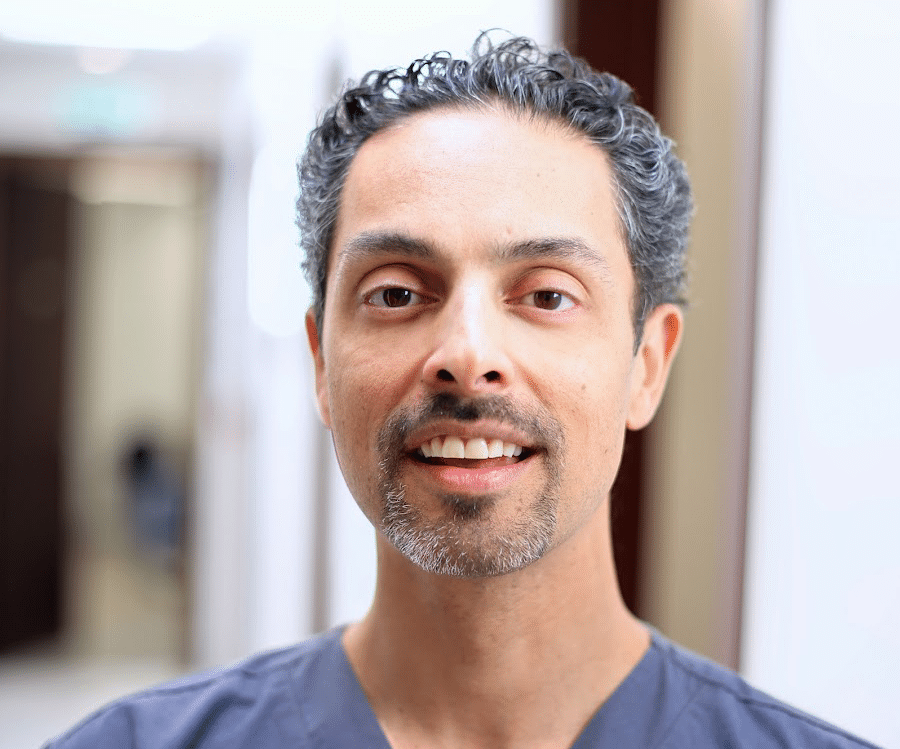Modern Anaesthesia for Plastic Surgery
Sedation anaesthesia, also known as “twilight anaesthesia,” is a combination of local anaesthesia for plastic surgery and sedative medications.
FACELIFT SURGERY IN HARLEY STREET
Sedation Anaesthesia

Sedation anaesthesia, also known as “twilight anaesthesia,” is a combination of local anaesthesia for plastic surgery and sedative medications.
Our patients literally sleep through their surgery, just like when you sleep at night, however brought on with medicines.
At the centre we have developed our own specialised form of twilight anaesthesia, based on practices in the USA. This sophisticated sedation uses tiny amounts of four to five sedation medications that cumulatively give a relaxing and safe experience avoid the risks and side effects of general anaesthesia.
In the NHS, sedation can mean having a single medication (commonly midazolam) this is limited in effectiveness; Dr De Silva’s team use a more sophisticated form of sedation.
Our patients by definition are conscious and breathing themselves, but very relaxed and often euphoric, and typically patients do not remember the procedure.
The recovery period is much shorter than general anaesthesia, with most patients able to leave between 30 to 60 minutes following the procedure.
This is the most advanced sedation technique available, the highest level of safety and speed of recovery.
Dr De Silva considers this the best option for patients undergoing nose reshaping surgery.
All our anesthesiologists specialise in sedation, have completed thousands of cases and are trusted by Dr De Silva to sedate his friends and family.
Will I Be Awake?
Most patients feel a little anxious or excited before surgery, once sedation is started to fall asleep, and literally sleep through the surgery. You will be drowsy, relaxed and comfortable during the procedure, with no discomfort or pain. The sedative medications combined with local anaesthesia for plastic surgery ensures that you are comfortable and relaxed.
Will I Remember the Surgery?
Typically, patients do not remember the procedure or the short period of time following it, though you will feel a little euphoric. Occasionally patients can remember just before having sedation and waking up afterwards.
Is Sedation Safe?
Sedation is a very safe form of anaesthesia for plastic surgery as you are literally sleeping during the surgery. You are breathing yourself and all your protective reflexes are working normally.
The sedation could be stopped at any time and you would just wake up. Sedation anaesthesia is far less invasive than general anaesthesia.
What Are the Side Effects of Sedation?
As with any medication, the use of sedative anaesthetic agents can result in side effects. Notably, the incidence of side effects with sedation are far less than general anaesthesia: drowsiness, dizziness, shivering (4%), headaches (4%), and post-sedation nausea & vomiting (0.7%).
Why Choose Dr De Silva in Harley Street, London ?
“What is the VFR 7, it is a comprehensive solution to facial ageing, The Vertical Face Restore 7-Key steps. This is an artistic procedure that I have carefully created, perfected, and refined as a highly unique surgical procedure, thanks to its ability to address the entire face, and not just a portion of it. It has been developed over a 10-year period and thousands of hours of work and refinement.”
Compared with a traditional facelift, the VFR technique offers far more differences than it does similarities, the lift is vertically oriented, not horizontally, which is a major reason for the natural look. Additionally, the VFR 7 addresses your entire face and not just a portion of it, simultaneously rejuvenating the outer brow, midface, jawline, and neck. A traditional facelift only addresses the jawline by pulling it toward the ears.

Facelift & Facial Only Treatments
By focusing entirely on only facelift & facial cosmetic surgery procedures, Dr De Silva is able to provide the expertise that can only come with specialisation: facelift and neck lift, blepharoplasty, rhinoplasty and chin implants.
Natural Looking Results
Dr De Silva is a believer in the importance of artistry behind cosmetic results and focuses his skills at delivering natural looking results.
Fast Recovery
Dr De Silva has pioneered the advances in technology to speed up recovery with a combination regenerative medicine techniques, Oxygen and LED Therapy.
World Class Expertise
Dr De Silva also teaches other surgeons internationally and has contributed to the development of advanced surgical techniques, laser technology and stitch-less tissue adhesives.
Contact Details
Call: 020 8748 2860
Email: info@drjuliandesilva.co.uk
Address:
23 Harley Street
London, W1G 9QN, UK
Dr Julian De Silva
5 stars based on 458 reviews

Renowned expert in Facelift/Facial Cosmetic and Plastic Surgery. Signature techniques in Blepharoplasty, Rhinoplasty and Facelift surgery. Expert in revision surgery and in natural looking results

